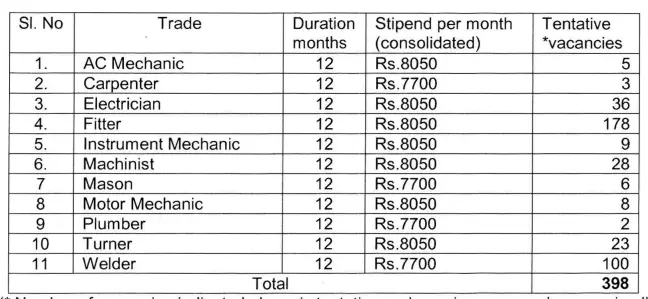SSC Selection Post Phase 12 Syllabus 2024, Exam Pattern
SSC Selection Post Phase 12 Syllabus 2024: The Staff Selection Commission has officially released the notification for the SSC Selection Post exam 2024. Candidates intending to appear for the examination must fulfill the specified eligibility criteria and possess a thorough understanding of the SSC Selection Post Phase 12 Syllabus 2024 and Exam Pattern.
The SSC Selection Post Phase 12 Syllabus 2024 for the Selection Post comprises a brief range of topics that candidates are required to cover prior to their participation in the examination. The eagerly anticipated SSC Selection Post Phase 12 Syllabus 2024 holds significant value as it facilitates candidates in their preparation effort.
SSC Selection Post Phase 12 Syllabus 2024
To excel in the SSC Selection Post Phase 12 exam, it is important for applicants to have a strongly grab of the SSC Selection Post Phase 12 Syllabus 2024 and Exam Pattern. Familiarizing oneself with the exam sections is essential to understand the topics that will be covered. The SSC Selection Post Phase 12 Syllabus 2024 for the selection post exam comprises four key sections, namely:
- General Knowledge: This section evaluates the candidate’s knowledge and understanding of current affairs, history, geography, science, and other related subjects.
- Quantitative Aptitude: In this section, candidates are tested on their mathematical and numerical abilities, including topics such as arithmetic, algebra, geometry, and data interpretation.
- General Reasoning: The general reasoning section assesses the candidate’s logical and analytical thinking skills through questions on topics like verbal and non-verbal reasoning, coding-decoding, series completion, and analogies.
- English Comprehension: This section evaluates the candidate’s proficiency in English language comprehension, grammar, vocabulary, and reading comprehension passages.
SSC Selection Post Phase 12 Syllabus 2024 Overview
In order to effectively prepare for the SSC Selection Post Phase 12 exam in 2024, candidates should familiarize themselves with the SSC Selection Post Phase 12 Syllabus 2024 and Exam Pattern. Below is an overview of SSC Selection Post Phase 12 Syllabus 2024:
| SSC Selection Post Phase 12 Syllabus 2024 Overview | |
| Organization Name | Staff Selection Commission |
| Position Name | Phase XII/2024/Selection Posts |
| Job Location | India |
| Exam Date | Apr-May, 2024 |
| Selection Process | Written Examination (CBT), Skill Test, Document Verification |
| Official Site | ssc.nic.in |
SSC Selection Post Phase 12 2024 Exam Pattern
The SSC Selection Post Phase 12 Exam Pattern for 2024 provides valuable insights for candidates preparing for the exam. The exam will consist of three separate Computer Based Examinations, each comprising of objective type multiple-choice questions. The subject-wise details are presented in the table below.
| SSC Selection Post Phase 12 Exam Pattern 2024 | ||
| Subject | Number of Questions | Maximum Marks |
| General Intelligence | 25 Questions | 50 Marks |
| General Awareness | 25 Questions | 50 Marks |
| Quantitative Aptitude (Basic Arithmetic Skill) | 25 Questions | 50 Marks |
| English Language (Basic Knowledge) | 25 Questions | 50 Marks |
| Total | 100 Questions | 200 Marks |
SSC Selection Post Phase 12 2024 Category Wise Syllabus
The SSC Selection Post Phase 12 Syllabus 2024 is categorized to provide a comprehensive understanding of the topics covered in the exam. It is essential for candidates to be well-acquainted with the Category Wise Syllabus to effectively prepare for each section.
- Matriculation Level SSC Selection Post Phase 12 Syllabus
- 10+2 Higher Secondary Level SSC Selection Post Phase 12 Syllabus
- Graduation & above Level SSC Selection Post Phase 12 Syllabus
SSC Selection Post Phase 12 Matriculation Level Syllabus
The Matriculation Level Syllabus for the SSC Selection Post Phase 12 exam encompasses various subjects, enabling candidates to prepare comprehensively. The table below presents the syllabus for each subject, outlining the specific topics to be covered:
| SSC Selection Post Phase 12 Matriculation Level Syllabus | |
| Subject | Syllabus |
| General Intelligence |
|
| General Awareness |
|
| Quantitative Aptitude |
|
| English Language |
|
SSC Selection Post Phase 12 Higher Secondary level Syllabus
The Higher Secondary(10+2) Level Syllabus for the SSC Selection Post Phase 12 Syllabus 2024 exam covers various subjects. The syllabus includes topics in general intelligence, general awareness, quantitative aptitude, and English language. By referring to this table, candidates can focus their preparation efforts accordingly and maximize their chances of success in the exam.
| SSC Selection Post Phase 12 Higher Secondary level Syllabus | |
| Subject | Syllabus |
| General Intelligence: |
|
| General Awareness: |
|
| Quantitative Aptitude: |
|
| English Language: |
|
SSC Selection Post Phase 12 Graduation level Syllabus
The SSC Selection Post Syllabus for Graduation and Above level covers a wide range of subjects and topics. In the General Intelligence and Reasoning section, candidates will encounter questions related to analogies, similarities and differences, spatial visualization, problem-solving, decision making, and coding and decoding.
| SSC Selection Post Phase 12 Graduation level Syllabus | |
| Subject | Syllabus |
| General Intelligence: |
|
| General Awareness: |
|
| Quantitative Aptitude: |
|
| English Language: |
|
Category: Click Here



